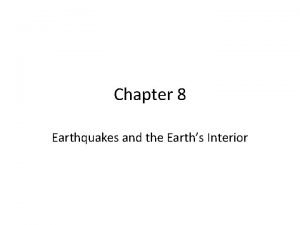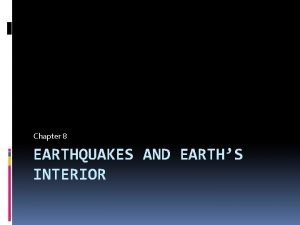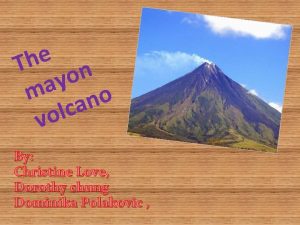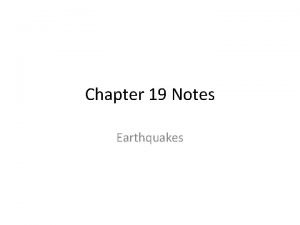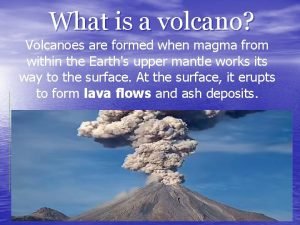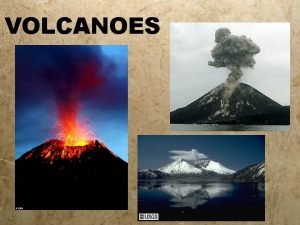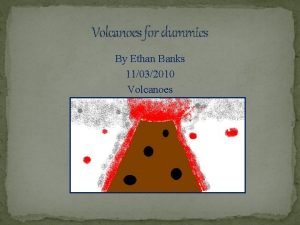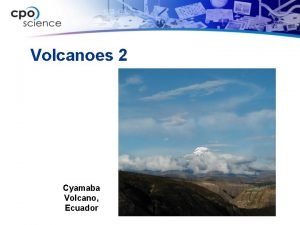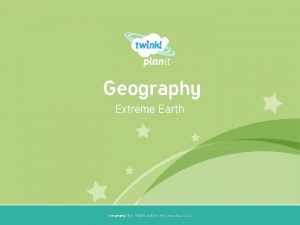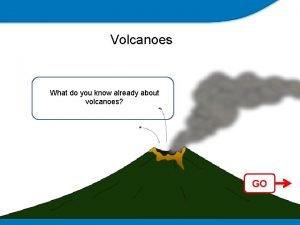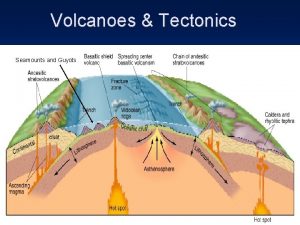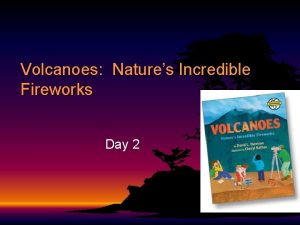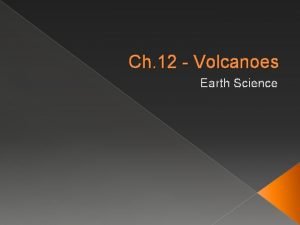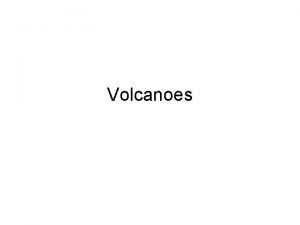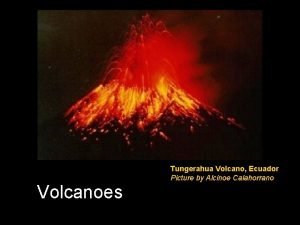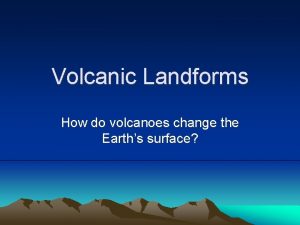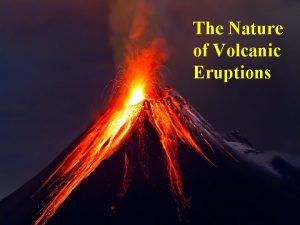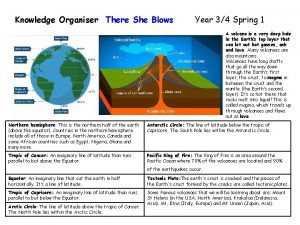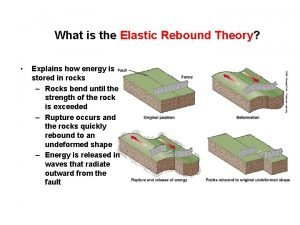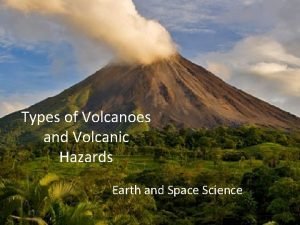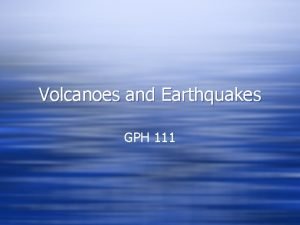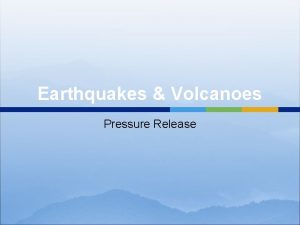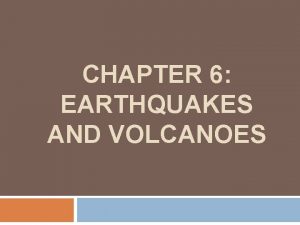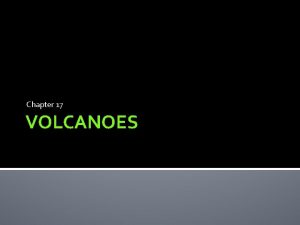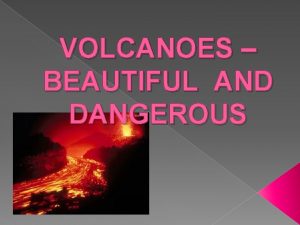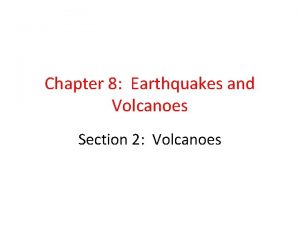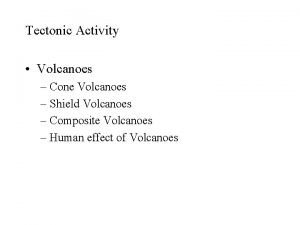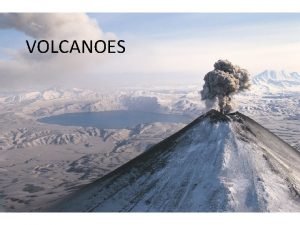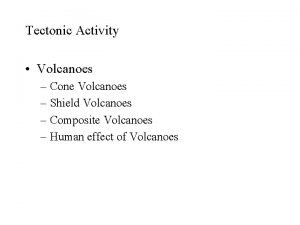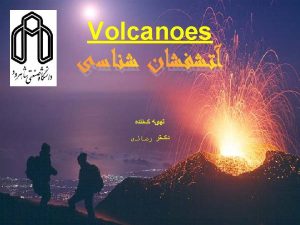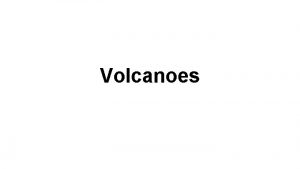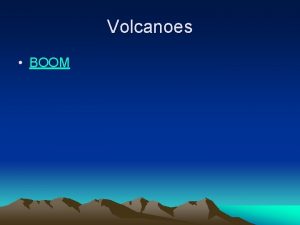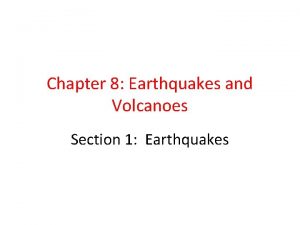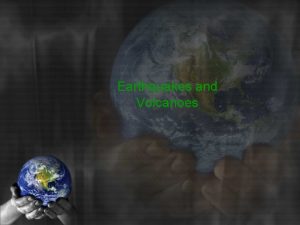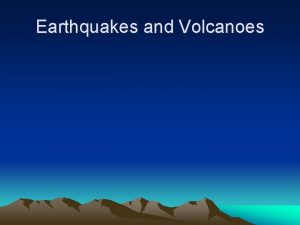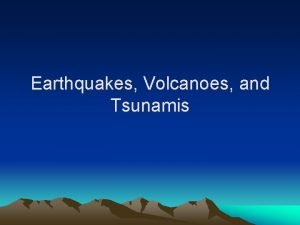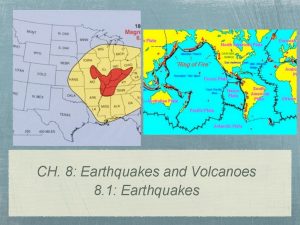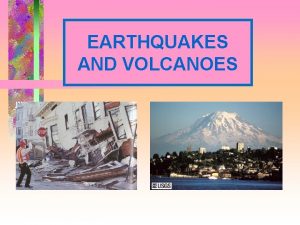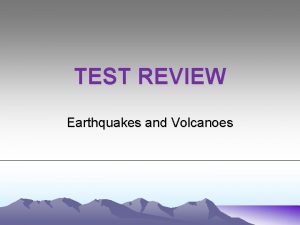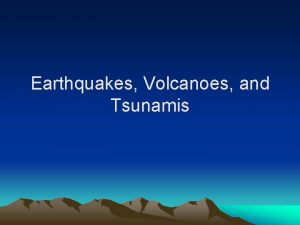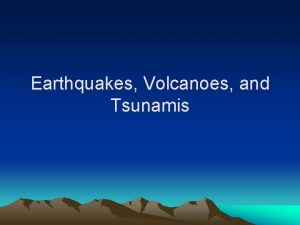Chapter 4 Lesson 2 Earthquakes And Volcanoes Earthquakes

























- Slides: 25

Chapter 4 Lesson 2 Earthquakes And Volcanoes


Earthquakes o Earthquake – sudden movement of Earth’s crust o The actual place underground where the rocks break producing vibrations is called the focus o The place on the surface directly above the focus is called the epicenter


http: //www. geo. uib. no/jordskjelv/index. php? topic=earthquakes&lang=en

http: //www. geo. uib. no/jordskjelv/index. php? topic=earthquakes&lang=en

http: //www. geo. uib. no/jordskjelv/index. php? topic=earthquakes&lang=en

San Andreas Fault

Seismic Waves Originate at the focus and travel outward in all directions Magnitude – the measure of the amount of energy released by an earthquake ü Aftershocks: Aftershocks Are adjustments in the crust after in earthquake




Volcano – opening in the Earth’s crust • Eruption – outpouring of melted rock, ash, and gases • Lava – magma that reaches the Earth’s surface • Crater – a • depression around a vent

Ring of Fire The ring around the Pacific Ocean that has most of the world’s volcanoes

Volcanoes Quiet lava flows

• Dike – magma that hardens in a vertical crack • Sill – magma that hardens between horizontal layers of earth • Laccolith – magma in a sill that pushes upward • Batholith – large, underground magma formation


Types of Volcanoes • Shield Volcano a) Built from layers of lava b) Non-explosive eruptions c) Not very steep, but can be big

Types of Volcanoes • Cinder Cone Volcano a) Built from pyroclastic material b) Moderately explosive, short eruptions c) Small in size, steep slopes

Types of Volcanoes • Composite Volcanoes a) Most common type b) Explosive eruptions and lava flow c) Built from pyroclastic material AND lava

Mt. St. Helen before the explosive eruption

Volcanoes

Mt. St. Helen after the eruption

• Island chain – line of volcanic mountains • Hot spot – stationary pool of magma • Island arc – volcanic islands that are made my subducting ocean floor plates

Mid-Plate Hotspots
 Chapter 8 earthquakes and volcanoes
Chapter 8 earthquakes and volcanoes Chapter 8 section 1 what are earthquakes
Chapter 8 section 1 what are earthquakes Chapter 8 earthquakes and earth's interior
Chapter 8 earthquakes and earth's interior Chapter 8 earthquakes and earth's interior
Chapter 8 earthquakes and earth's interior Interesting facts about mt mayon
Interesting facts about mt mayon Are canyons constructive or destructive
Are canyons constructive or destructive Chapter 19 earthquakes
Chapter 19 earthquakes Chapter 19 earthquakes
Chapter 19 earthquakes Volcano diagram for kids
Volcano diagram for kids How are volcanoes classified?
How are volcanoes classified? Paboeboe
Paboeboe Ecuador
Ecuador Extreme earth
Extreme earth What do you already know about volcanoes
What do you already know about volcanoes Guyots
Guyots Volcanoes nature's incredible fireworks
Volcanoes nature's incredible fireworks Types of volcanoes
Types of volcanoes How are volcanoes formed
How are volcanoes formed Most volcanoes occur __________. *
Most volcanoes occur __________. * Active volcanoes map
Active volcanoes map How do volcanoes change landforms?
How do volcanoes change landforms? Big island size broad slightly domed
Big island size broad slightly domed Volcanoes knowledge organiser
Volcanoes knowledge organiser What does the elastic rebound theory explains?
What does the elastic rebound theory explains? Types of volcanoes
Types of volcanoes Ring of fire volcanoes
Ring of fire volcanoes


